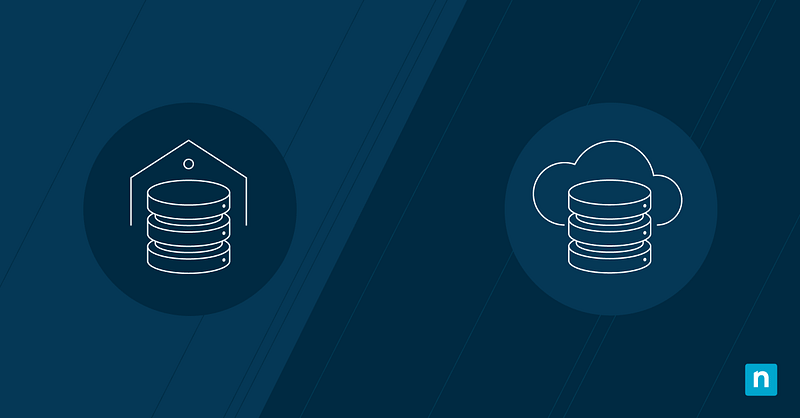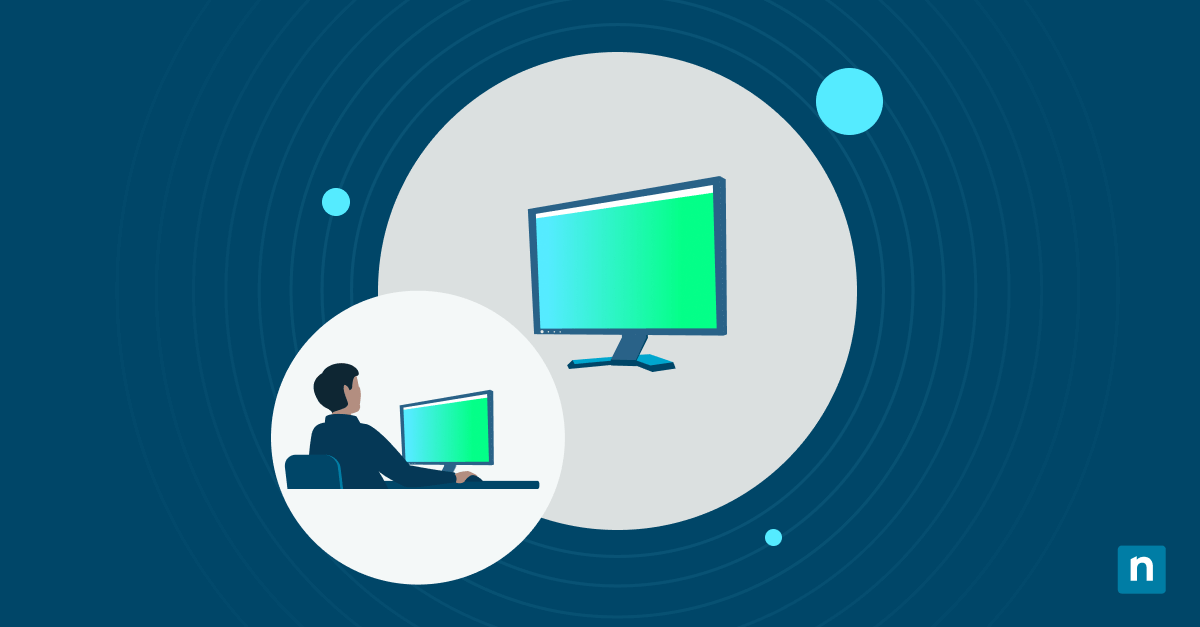Since the early 2010s, software delivery methods have largely evolved. While on-premises tooling defined the first wave of customizable software, the market saturation of cloud-based counterparts offers new forms of software solutions. Navigating the complexities of on-prem, cloud, and hybrid setups demands a deep understanding of each offering’s efficiencies and requirements. Learn more about on-premise vs cloud software in our comparison below.
What is on-premise software?
On-premises software is installed and operated solely on an organization’s internal infrastructure. The customer holds full responsibility for their own servers, computing resources, and security that keeps this software available. Alongside maintaining these structural components, the organization also pays for the necessary licenses from any third-party software vendor.
What is cloud-based software?
Broadly speaking, the cloud allows organizations to outsource the physical computing processes to dedicated suppliers via the Internet. Cloud computing can look different across the plethora of today’s cloud customers:
- Software as a Service (SaaS) is one of the most accessible forms of cloud-based software; here, the cloud provider hosts all of their software in a data center and offers users access to it. One example is Microsoft’s Office suite.
- Platform as a service (PaaS) offers a greater degree of abstraction. Here, the cloud vendor manages hardware and software resources that customers use to develop applications. Sticking with the Microsoft example, Azure is one of the most popular PaaS offerings.
- Infrastructure as a service (IaaS) provides the most granular level of abstraction: customers are granted access to infrastructural resources such as computing, storage, networking, and virtualization. Azure and Amazon Web Services both offer highly customizable IaaS tools.
On-premise vs cloud software
When computational power was in its early stages of growth, on-premise setups were a necessity. Organizations that hoped to make use of established products such as Microsoft Office, the Adobe Creative Suite, and SAP’s finance software had to first implement the necessary in-house infrastructure to do so.
Cloud infrastructure has rapidly evolved since those early stages. Throughout the 90s and early 2000s, internet connectivity was often prohibitively slow and expensive. With investments into fiber-optic and other hardware, the most recent statistics on internet speeds show its acceleration: global median download speeds have surpassed 60 Mbps. The cloud provider’s position as data center owner means their own server stacks handle all computing power: customers are granted portions of it via this online connectivity.
The concrete differences between these on-premise and cloud approaches include:
Performance and reliability
One of the most important aspects to any core infrastructure is its performance and reliability.
In-house software is only as good as its maintenance team. Not only is a well-trained team vital for maintaining good performance, but patching processes need to be tightly planned and executed. Compare this to cloud updates–by decoupling hardware assets and computing requirements from your own teams, technical system management is no longer a drain on your teams’ time and effort.
Cost
Transitioning to the cloud enables companies to streamline their IT expenditures. This is achieved by eradicating the need for capital investments in hardware and software, as well as cutting the demands of on-premises data centers. These encompass server arrays, continuous power consumption for cooling and operation, and the engagement of IT professionals to oversee this infrastructure. The costs accumulate swiftly.
Cloud payment is usually based on actual usage, reducing operational expenses, enhancing infrastructure efficiency, and facilitating flexible scaling that keeps pace with evolving business requirements.
Security
When an organization owns the hardware and systems that underlie its IT infrastructure, it has total control over where those components live, how they run, and who can access them. This heightened degree of control has seen some organizations assume their data is more secure if hosted locally.
On the other hand, many cloud providers offer a cohesive overview of every set of policies, technologies, and controls that form the basis of your security posture. Cloud providers’ heightened protection can help you identify vulnerable data, apps, and infrastructure before attackers do.
Accessibility and scalability
On-premises software requires significant upfront investment – hardware purchases, software licensing, and infrastructure setup all take their toll. This initial cost can be a barrier for smaller businesses or organizations with limited budgets. The upfront cost of new server stacks isn’t the only financial drain imposed: the cooling requirements of established server stacks can significantly impact energy bills.
A set of on-premises servers offers a fixed amount of resources. When more are needed, the only option is splashing out on more servers – which takes time and money. Ultimately, only some companies can create an in-house infrastructure that matches the scope of a cloud provider’s services.
Cloud’s advantages and disadvantages
In 2017, nearly 60% of all data center capacity was provided by on-prem solutions. Synergy Research’s latest prediction states that by 2027, this number will have halved. The decline of on-prem is a result of organizations making an honest assessment of their own use cases and evaluating the advantages and disadvantages facing each option.
The advantages of cloud software
From request efficiency to operational convenience, cloud-based software offers a vast list of advantages.
- Ubiquitous Access: With requests handled by the cloud vendor’s global network, cloud-hosted applications can be accessed from anywhere and at any time. This not only unlocks a greater global scope for your business but also frees up considerable time and resources from the demands of an international server base.
- Cost-Efficiency: The precise costs of both on-prem and cloud can vary across each unique use case. However, cost guardrails include the fact that cloud payment structures scale linearly with how many resources you use. This keeps expenses streamlined to operational costs.
- Outsourced data center management: Alongside the reduced operational costs, cloud-based organizations no longer need to keep replacing and upgrading expensive hardware. By essentially renting out portions of pre-managed compute power, organizations can run leaner teams that make the most of externally managed hosting and upkeep.
- Rapid Scalability: Cloud-based software deploys online, with new setups and configuration changes implementable within days or even hours. Licenses can be quickly chopped and changed to match operational shifts. This boosts your Identity and Access Management (IAM) security, as unused or old employee accounts can be removed without delay.
- Visibility and Security: Robust security measures in data centers surpass typical business capabilities, ensuring better data safety compared to local servers.
Disadvantages of cloud-based software
While cloud software offers a rich variety of customization and control, there are two main limitations to be aware of.
- Dependence on internet connection: Cloud-based software requires constant internet connectivity. If your ISP’s connectivity dips – or if the cloud provider’s own services go down temporarily – there are very few direct mitigation steps available to you. A proactive approach is vital when choosing a cloud vendor: keep an eye out for anti-failure features such as data copies and automatic failovers in the event of unavailable services or hardware failure.
- Unpredictable Expenses Across Unmanaged Environments: The flexibility of cloud resources means that your DevOps team holds unprecedented control over month-to-month expenses. While many established cloud customers make the most of consistent and predictable monthly expenses, a rapidly scaling or disorganized company can run into surprise costs.
Advantages of on-premises software
There are a number of circumstances that still lend themselves to on-prem, dictated largely by the following advantages.
- Control and customization: On-premises software lends you the granularity to fine-tune specific settings and configurations.
- Data security and compliance: While many professionals assume that on-prem provides a higher degree of security, the tighter degree of control can be a blessing and a curse. Strictly regulated industries such as healthcare and finance may find it easier to achieve compliance via this direct control.
Hybrid: The best of both worlds?
In a hybrid setup, certain applications, services, and data is stored in on-premises infrastructure, while others are hosted in cloud-based environments. It’s a strategic approach that leverages each deployment model’s strength to create a more flexible and versatile IT environment.
To further clarify the distinctions discussed, you may watch this short video: ‘On-Premise vs Cloud Software: What’s the Difference?’.
Making the best choice
First and foremost – identify the requirements of your own business and customers. A larger company may find that the control that on-prem software provides is what they want to prioritize. If your organization is looking to facilitate a more global reach – or even just support remote working – cloud providers are uniquely well-positioned to support this. Data security and compliance requirements are equally important here.
Also, assess the IT resources and expertise at your disposal. If you’re running a lean team, on-prem may overstretch their capacities; at the same time, consider processes that allow each team member to unlock their full capabilities. A cloud-based foundation grants you a greater degree of future options.
Across on-prem, cloud or hybrid, the most vital part is how each approach is managed. NinjaOne’s cloud-based platform offers a single solution that combines endpoint management, patch management, and help desk processes into one cohesive whole. We enable IT teams to standardize their operations and begin automating timesinks. Transform your team from cost-driver to strategic partner with NinjaOne’s unified IT management platform. Watch a demo or start your free trial today.








